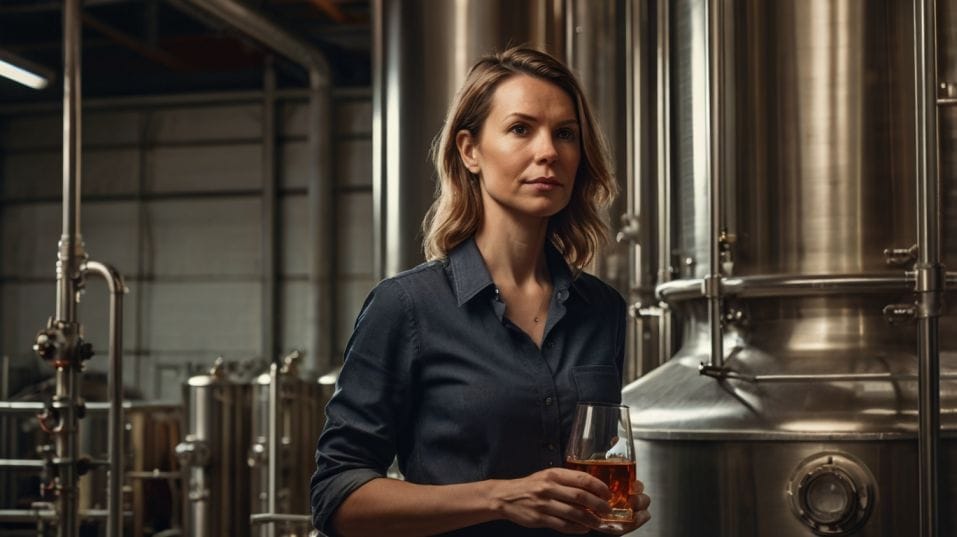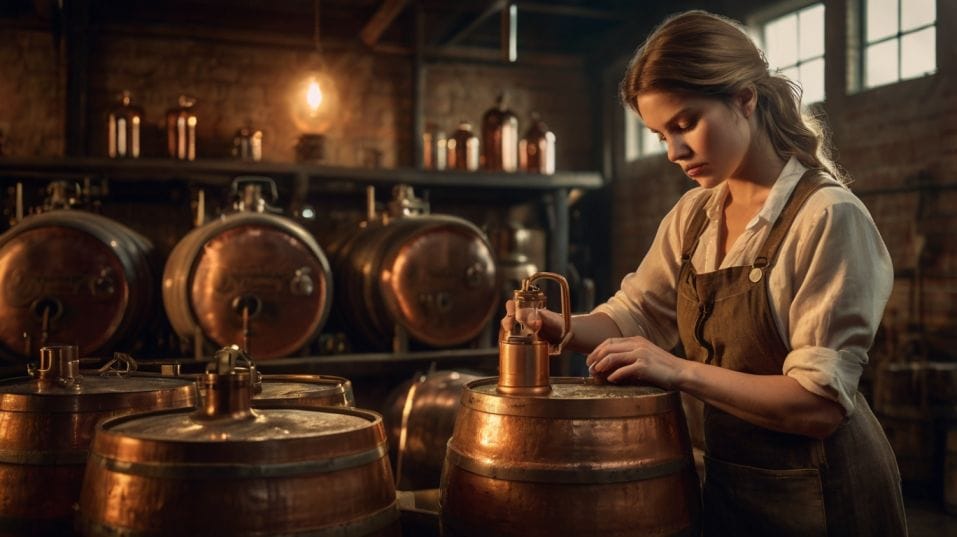The Role of Women in Whiskey History
Discover the untold role of women in whiskey—why their craft, instincts, and legacy matter if you're serious about tasting and collecting better.

What if the smooth sip in your glass owes everything to someone history forgot? Long before whiskey became collectible, it was crafted in kitchens and backyards—often by women. This isn’t a new wave or a niche story.
It’s the backbone of whiskey’s evolution. If you're just starting your whiskey journey, knowing who shaped it will sharpen your palate and deepen your respect. Because to taste it fully, you’ve got to understand who made it matter.
Fermentation, Fire, and Foundations
Before whiskey had marketing departments or shelf talkers, it had stills built in backyards and fermentation pots in kitchens. In both early America and the British
Isles, distilling began as a domestic skill—essential, practical, and often feminine. Women distilled not for novelty, but for survival. They preserved food, raised crops, and fermented anything that could hold a boil.
When whiskey evolved from moonshine into something more refined, it was their recipes, rhythms, and instincts that carried over.
Want to taste what they built? Understand what they valued. Early distillers—many of them women—weren’t chasing smoke, novelty finishes, or age statements.
They were after utility: something shelf-stable, drinkable, and maybe even barterable. That’s why technique mattered so much. It had to be clean. It had to last. It had to be good.
So they paid attention. Fermentation time. Yeast strain. Grain crush. The balance between sugar and enzyme.
These weren’t written in textbooks—they were passed down in daily practice. That same attention to process still separates great whiskey from forgettable bottles today.

Women at the Still, Even in the Shadows
The industrialization of whiskey changed the scale, but it didn’t erase the presence of women in distilling. It just made them harder to see.
Hidden Labor in Historic Distilleries
In Scotland and Ireland, women often worked in and around distilleries even when laws or social customs blocked them from leadership titles. They managed maltings, tended yeast, and supervised barrels.
In the American South, enslaved women and their descendants brought botanical knowledge and fermentation skill to early bourbon production—though their contributions were rarely recorded and even less often acknowledged.
By the time American whiskey began its modern boom, women were embedded in every level of production—but rarely credited.
Even today, you'll find master distillers who quietly admit that their most consistent tasters or process troubleshooters are women with decades of experience and zero headlines.
Why? Because in whiskey, performance speaks louder than PR.
Science, Sensory Skill, and Blending Mastery
Let’s talk technique. If you’re working to sharpen your palate, get smarter about collecting, or simply appreciate what’s in your glass, you need to understand what separates competent whiskey from exceptional whiskey. One word: balance.
Women in the Tasting Room
That’s where women have historically excelled—especially in roles that demand sensory judgment, like blending and maturation.
While distilling might be loud and mechanical, blending is intimate. It’s about subtlety, proportion, and restraint. That’s not a stereotype—it’s a skillset.
And it takes a particular kind of discipline to consistently balance cask strength spirits into something graceful.
Think of iconic whiskey lines with signature consistency. Dig into who’s really been overseeing their sensory panels, managing their rickhouses, or pulling samples every few months for twelve straight years.
You’ll often find women in those roles—not because of quotas, but because their instincts, patience, and consistency earn them the keys to the barrel rooms.
Preservation Through Prohibition and Beyond
If you’re collecting whiskey, you probably know about Prohibition. But what’s less often mentioned is who kept distillation alive during those 13 years when everything went underground.
Survival and Skill in Tough Times
Many women—especially in rural communities—ran stills while their husbands worked or stayed out of sight. They cooked, distilled, and sold spirits discreetly and often at great personal risk.
These weren’t whiskey evangelists or rebels. They were craftswomen operating under pressure, passing down essential techniques under wraps.
That same underground resilience shows up again and again in whiskey’s story. In modern times, women like Nancy Fraley, Marianne Eaves, and Rachel Barrie have emerged with well-deserved recognition.
But behind every one of them are countless unnamed women whose knowledge, taste, and grit helped carry whiskey through war, collapse, trend cycles, and industry shifts.
Collect Smarter by Tracking the Makers
You’re not collecting whiskey just for the sake of it. You’re building a relationship with a spirit that rewards patience, context, and curiosity. So if you really want to level up your collection, start tracking who actually made what you’re drinking.
Substance Over Hype
Don’t just look at brands. Look at the distiller. The blender. The lab team. Who’s on the tasting panel? Who’s managing the rickhouse rotation? Who’s making the final call on the flavor profile?
Distilleries that have long supported women in core production roles tend to show up with more consistency and more integrity across their releases.
Their whiskey doesn’t rely on stunts. It ages well, it opens in the glass, and it rewards repeat sips—not just once, but over the years.
That kind of whiskey teaches you something. And collecting it isn’t just smart—it’s strategic. Because when the hype fades, the producers with substance stay strong.
Final Thoughts
If you’re serious about whiskey—tasting it, understanding it, collecting it—you need the full story. And that story includes women at every turn.
They’ve developed the techniques, preserved the traditions, elevated the craft, and continue to raise the bar for what’s possible inside a glass.
So here’s your move: Next time you buy a bottle, ask who made it. Dig into the production team. Taste something blended by someone who’s spent decades dialing in nuance. Start training your palate to spot balance, not just boldness.
This isn’t about inclusion for the sake of it. This is about tasting better, collecting smarter, and showing respect for the people who shaped the whiskey you’re drinking.
And a lot of those people—then and now—are women. Start today. Try something built by someone you've never heard of. Let the whiskey do the talking. And listen closely.




